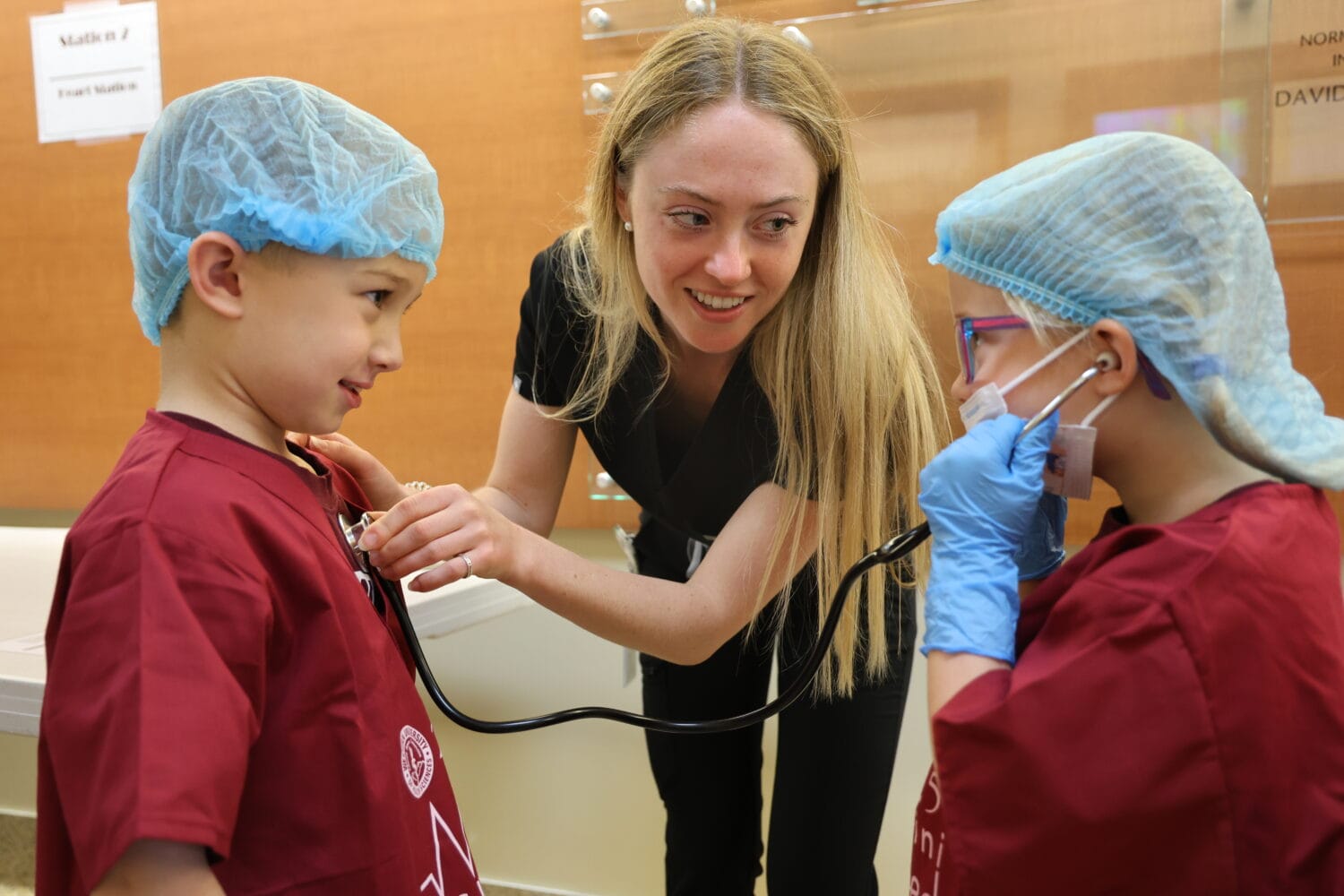Ray Symposium
When the youngest of the baby boomers turn 65 in 2030, the population of older Americans will have doubled from 35 million to 70 million. Their medical needs will require massive restructuring of the health care system and a renewed commitment to geriatric training.
David B. Reuben, MD, Director, Multicampus Program in Geriatrics Medicine and Gerontology (MPGMG) and Chief, Division of Geriatrics at UCLA Center for Health Sciences, gave this message at the third annual Ray Symposium at Western University of Health Sciences on Thursday, April 9, 2009.
Reuben served on the Institute of Medicine (IOM) committee that produced the 2008 report “Retooling For An Aging America: Building The Health Care Workforce.” He talked about the committee’s findings and how health care educators, providers and students could help address the growing needs of an aging population.
Older persons make up about 12 percent of the population, but consume a disproportionate amount of health care services: 26 percent of physician office visits, 35 percent of hospital stays, 34 percent of prescriptions and 38 percent of emergency medical services responses.
The baby boomers will look much different than older populations in the past – more diverse, highly educated and with fewer children to assist them, Reuben said.
The health-care workforce is inadequate to address the aging population, with about 7,100 geriatricians – a total that is declining — and about 1,600 geriatric psychiatrists, Reuben said. Less than 1 percent of nurses and pharmacists and less than 4 percent of social workers specialize in geriatrics.
One factor in this shortfall is doctors in general earn less money specializing in geriatrics than they would in other areas such as endocrinology, infectious disease and rheumatology.
There is also poor retention of direct-care workers, with a 71 percent turnover of nurse aides. Forty to 60 percent of home health aides leave after one year. Eighty percent to 90 percent leave in the first two years. Assisted-living staff turnover ranges from 21 percent to 135 percent.
“This turnover can cost $4.1 billion annually just in retraining,” Reuben said.
Direct-care workers earn little more than food counter attendants, he said. In Las Vegas, nurse aides often quit to clean ashtrays in casinos for the same amount of money.
“It’s very heavy work with a lot of injuries, lifting older people and moving them in nursing homes,” he said.
A hair stylist in Los Angeles needs 1,500 hours of training for a work license, while direct-care workers are federally required to only have 75 hours of training, Reuben said.
“We’re on a collision course heading for disaster,” Reuben said. “We need to change the way we do business.”
The IOM committee recommended enhancing geriatric competence of the general workforce, increasing recruitment and retention of geriatric specialists and caregivers, and implementing innovative models of care.
All health care professionals – doctors, nurses, pharmacists, dentists, and others – should be required to demonstrate minimum competence in the care of older adults prior to graduation. All board examinations should be infiltrated with geriatrics, Reuben said, and public and private payers should provide financial incentives to increase the number of geriatric specialists in all health professions.
“You should never have to take a (financial) hit for specializing in geriatrics,” Reuben said.
U.S. Sen. Barbara Boxer, D-Calif., has introduced a bill that would provide loan forgiveness and career advancement opportunities for health-care professionals and direct-care workers who train and specialize in geriatrics. California also has legislation in development to address these issues.
How much will this training and new requirements cost?
“A lot less than if you don’t change things,” Reuben said. “The time to act is now. It’s like turning around the Titanic. These are the kinds of legislation and funding we need to do now so professional students in 2020 get a different kind of training, so by 2030, when baby boomers turn 65, we’re prepared.
“This is a unique opportunity for changing health care,” he said. “This is our best shot in at least 20 years.
The Ray Symposium, now in its third year, brings speakers to WesternU who can address national health care issues that would appeal to the broadest possible audience, said Daniel Robinson, PharmD, FASHP, Dean of the College of Pharmacy. The symposium was supported by an unrestricted educational grant from Watson Pharmaceuticals. Dr. David Reuben was invited because he is nationally recognized for his work in improving the quality of care provided to older persons, Robinson said.
“As the 78 million-member baby boom generation begins to turn 65 in 2011, we need to ask ourselves if we are prepared for the health challenges that lay ahead,” he said. “As a member of the Institute of Medicine Committee on the Future Health Care Workforce for Older Americans, Dr. Reuben’s message is important to students, faculty, policy makers, and the community at large.”
Reuben’s talk touched on many different aspects of geriatrics and addressed the direction the health professions are heading, said Simon Ahn, PharmD ’10, who attended the presentation.
WesternU’s College of Pharmacy organizes the annual Ray Symposium in honor of Max Ray, MS, PharmD, Dean Emeritus of the College of Pharmacy. He joined WesternU as Professor of Pharmacy Practice and Director of the Center for Pharmacy Practice and Development in 1996 and served as Dean of the College of Pharmacy from 1999 to 2006.



